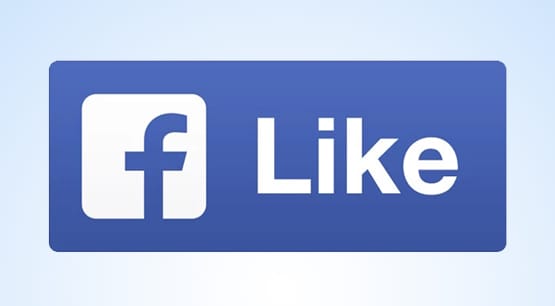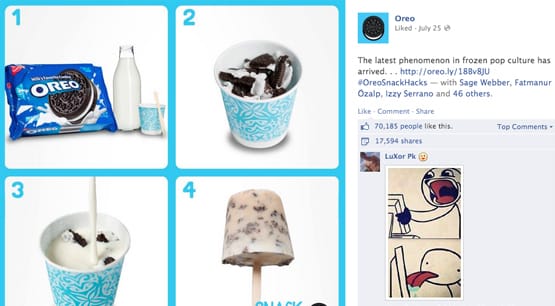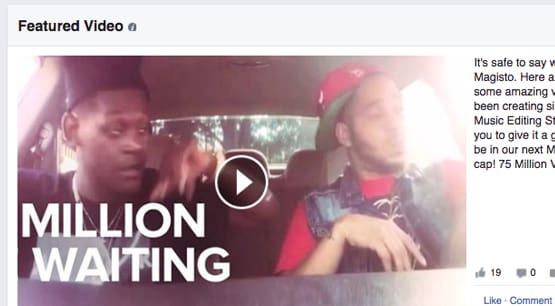What Kind of Facebook Posts Get The Most Likes?

A common thought in marketing is to simply find what’s performing the best, and then imitate it. This kind of trend-following works, though it’s often mediocre. Why?
Essentially, when you’re following what is already working the best, you’re not at the forefront of the pack. The people who get the most value out of something are the people who innovate it. The imitators often don’t get nearly as much value out of it. That is, unless the trend-setter fails to iterate and improve. Any time you can take an existing trend and give your own unique spin to it, you have a greater potential for value.
What does this have to do with the topic? Consider this: just because X type of post gets a ton of likes on Facebook does not mean YOUR post is going to get that same amount of likes. There are a lot of additional factors, including the size of the initial audience, paid promotion budgets, capitalization on existing trends, and the topic of the post.
That said, we all know that certain kinds of content perform better on Facebook than others, all else being equal. It’s baked into EdgeRank; different post formats have different weights, making them more likely to show up in feeds.
A Data Driven Look
First of all, let’s look at some data. BuzzSumo analyzed over two billion posts on Facebook that were published in 2017, and came to some interesting conclusions.
First of all, let’s look at the top ten most shared pieces of content on Facebook for 2017.
- The Despacito music video, with 22.2 million interactions.
- The “Shape of You” music video by Ed Sheeran, with 9.7 million interactions.
- A news article about the suicide of the Linkin Park singer, with 7.4 million.
- A quiz about grammar mistakes, with 5.4 million.
- The “I’ve Been Crying” music video by Prue Nakarin, in Thai, with 4.5 million interactions.
- An article about a cheap cross-continent train ride, with 3.8 million.
- Another quiz, this time about picking a state to move to based on personality, with 3.1 million.
- A news article about a Trump policy regarding welfare, with 3.1 million.
- Another news article about Muslim anti-ISIS marches and how mainstream media ignored them, with 3.1 million.
- A video about Garth Brooks giving a guitar to a fan with cancer, with 2.6 million.
This is specifically the most shared pieces of content, though, and not necessarily the most liked. There’s a companion data set of the most viral content, with a different top ten.
- A video about the life hacking your clutter.
- A video simply titled “Best Video You Will See” about animals.
- A “People are awesome” video complication.
- A video of someone singing with Whitney Houston.
- A life hack video to brightening up your day.
- A video about upgrading a wardrobe.
- A video about repurposing old t-shirts.
- A video for making pies.
- A video about cute animals playing.
- A food video with two-ingredient recipes.
This one is a lot clearer with a specific type of post.
This is where you might see a certain trend and thing “that’s what I want to do!” Depending on which data set you’re looking at, it’s either a good idea or a bad idea.
If you’re looking at the first data set, you see all sorts of content. News articles, political opinion pieces, and music videos are all very viral, because they have an extremely broad potential audience. Who doesn’t like music? A music video from a well-known artist can reach incredible heights of virality on Facebook.
Does that mean you can make a music video and get a million views? Probably not. Unless you’re already a famous musician, your music videos aren’t going to get anywhere near this list for 2018.
Can you expect better than average performance out of a video, compared to a text post or a link post? Probably. After all, ALL TEN of the top most viral posts of 2018 were videos.
The same goes for other forms of content, except not quite. See, regular link post articles are extremely viral in some instances, but very much not in others. The ones that were shared millions of times are those that affect hundreds of millions of people, like presidential policies and global protests. Unless you have that same scale of impact, you can’t expect your link posts to perform nearly as well.
Also, one thing to note here is that this survey is of 2017 data. The early months of 2018 have led to a scandal involving Facebook privacy data misused on a massive scale. In 2017, two of the top 10 most shared pieces of content were quizzes. In 2018, they revealed that Cambridge Analytica used API abuses through quizzes to harvest massive amounts of personality data to misuse.
You can bet that trying to share a quiz right now, and at least for the next six months, is going to backfire painfully. I wouldn’t even try it. Not that quizzes have been a great form of marketing for a while now, but they’re even worse than usual in the fallout of this privacy disaster.
As far as the type of post goes, video is the way to go. If you can produce a high quality video, you’re liable to get more likes and shares on it than any other kind of post, all else being equal.
From there, other forms of media post, like 3D posts, panoramas, and slideshows will fall in the next few ranks. Link posts are below those in general, barring exceptional kinds of content. Pure text posts will do worse than link posts, and “obsolete” styles of posts like Notes will do the worst of all, as Facebook slowly kills the functionality entirely.
Types of Content
There’s another lesson to be taken from this analysis of data, and that’s the type of content being produced. If you’re angling to make a video, you need to make the right kind of video. Obviously, certain kinds of video aren’t even allowed on the platform. Anything showcasing violence or illegal activity is going to be banned and removed.
There are a bunch of different kinds of topics that can do very well, of course depending on the specifics of the content.
- Music Videos from popular artists.
- Heartwarming videos that make you feel better about life.
- Videos of animals being cute.
- Videos showcasing complex data in a simple way.
- Politically divisive and tribal content.
- Videos showcasing ways to make life easier.
How can you potentially leverage each of these for your marketing?
1: Music videos. This one, chances are, you’re not going to be able to leverage at all. You can’t exactly make one music video and become the next Taylor Swift. You can’t even re-post a popular music video without running into penalties based on copyright violations, and that’s not something you want for your business.
You can try to make original music, but then you’re competing with all of the other small musical groups, and nothing necessarily makes you stand out. You could take off, but you might not, and it’s purely the whims of the world if you do.
You can try to make a parody song, and it can work well, as long as you have actual musical talent and can make a good mix. On the other hand, you run into the possibility of falling flat and becoming a laughingstock, and that will stick with you for years.
You can also try hiring a major musician to work with you to make something unique. This can work extremely well, but it’s also likely to cost you a few million bucks. Top-tier artists don’t come cheap.
2: Heartwarming videos, and 3: Animals being cute, kind of both fall into the same category. They both add a moment of pleasant euphoria to daily life. They’re also a dime a dozen online. Seriously, go to YouTube and type in “cute cat” and see what comes up. I’ll give you a hint; it starts with “About 18,400,000 results.”
In order to stand out, you need either something unique, or something extremely well produced. All of the best, most recent cute animal videos are either very well recorded antics of common animals like cats and puppies, or are film of more exotic animals like red pandas.
Other forms of heartwarming content tend to come in the wake of disaster. People making food for those suffering in the wake of a hurricane, those helping the people of Puerto Rico survive that disaster, and so forth are all examples of good heartwarming content.
Can you leverage it? Well, that depends on if you’re the kind of brand known for general news, or if you’re in a position to make that news. Chances are just reporting on such news isn’t going to work. You’re going to need to find some local version of charitable action, take that action, and record a video about it. Even then, you’re not necessarily likely going to benefit; the benefit goes to the reporters. After all, if you’re just reporting on your own charity, it looks like you’re doing it just for the coverage, and that looks bad.
4: Simplified complex data can work very well. Imagine a YouTube channel like VSauce, which takes the idea of explaining difficult concepts in a simple way into an art form. There’s a reason he has 13 million subscribers.
If you have a niche form of complex data, you can explain it in a simple way with broad appeal, and can produce it in a slick video, you can do very well with it. However, that’s a lot of sequential “ifs” in a row there. You need a kind of broadly applicable topic, you need detailed data about it, you need to be able to format that data in a simple way and keep it interesting to the layman, and you need to present it all in the space of just a few short minutes. Remember long videos don’t work as well as short videos on Facebook.
5: Politically divisive content can get a lot of viral attention simply because it’s the kind of content everyone likes to share. One group will share it because they agree with it, and another group will share it to mock it and refute it; both groups will argue in the comments, leading to even more attention and viral spread.
This is fine, except it might not be the kind of content you want to share as part of your brand. If you’re a small toy store, it’s not really your place to be officially commenting on politics. You can, of course, and a lot of small brands do, but you need to think hard about your audience, your potential politics, and how you can survive the ramifications of pissing off an entire group of people.
6: Videos making life easier is probably actually your best bet. The “lifehack” style of video has a lot of viral potential, but you have to tie it into your brand somehow. Your small toy company might be able to make some good lifehack videos about storing toys, keeping a kids playroom clean, and other such relevant topics. You’re a lot less likely to get away with cooking-based life hacks.
In every case, in order to succeed with video, you need to produce a high quality video. Good camera work, well-recorded and filtered audio, a solid script, background music, the whole nine yards. It’s all essential; poorly produced videos just don’t do well. There’s only so much benefit you can gain from the natural boost a video has over other post types.








